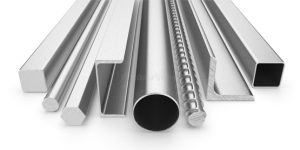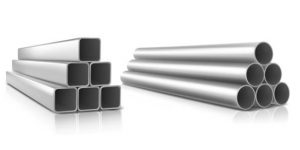Difference Between Carbon Steel And Stainless Steel
Just because two blades or any other item is manufactured of steel doesn’t mean they have the same type of steel. There are different types of steel available on the market, and the two most popular ones are carbon steel and stainless steel. Both types of steel are similar and different from each other in many ways. For instance, stainless steel must have 10.5% chromium, whereas carbon steel features less than 10.5% Chromium content. Let’s dig in to find what the difference between carbon steel and stainless steel is?
Table of Contents
Difference Between Carbon Steel And Stainless Steel
Stainless Steel
Stainless steel is specially designed to protect against this oxidation process. It has a minimum chromium content of 10.5% by mass. This is essential as chromium, as compared to iron, is not susceptible to oxidation. One can easily expose chromium to oxygen without developing corrosion or rust, making it an invaluable element in stainless steel manufacturing. There is also a protective layer of chromium in stainless steel that creates a barrier between the iron content of metal and the environmental oxygen, which protects it from corrosion.
Types of Stainless Steel
There are different types of stainless steel available depending on the level of chromium.
Austenitic
One of the most widely utilized types of stainless steel, Austenitic comes with low yield strength but powerful heat and corrosion resistance. It is commonly used in industrial piping and vessels, housewares, construction, and architectural facades. In fact, this is the most prominent family of this steel type which makes up about two-thirds of the stainless steel production.
Martensitic
Featuring low chromium content, Martensitic is less magnetic and corrosion resistant as compared to other stainless steels. This is one of the most complicated and vital members of the stainless steel family and is commonly used to manufacture the machete, knives, and turbine blades.
Ferritic
This type of stainless steel comes with no nickel and has better heat, corrosion, and cracking resistance as compared to other types. It is commonly used in indoor architecture, boilers, and washing machines.
Precipitation
Equipped with the corrosion resistance of austenitic metals and can be hardened to higher strengths, precipitation is extremely strong when few other elements such as copper, aluminum, and niobium are added.
Duplex
In the Ferritic and austenitic steels composite, the duplex is strong and flexible with two times more strength than austenitic stainless steel. It is typically used in pulp, paper, shipbuilding, and petrochemical industries.
Carbon Steel
- Minimum Needed Copper Must Not Exceed 0.40%
- No Minimum Content Requirement For Cobalt, Chromium, Titanium, Nickel, Vanadium, Tungsten, Or Other Corrosion-Resistant Metals
- The Maximum Content Of The Silicone Should Not Exceed 0.6%
- The Maximum Content Of Copper Should Not Exceed 0.6%
- The Maximum Content Of Manganese Should Not Exceed 1.65%
The use of such high carbon content changes the steel characteristics. In other words, it becomes harder and stronger. Perhaps this is one of the prime reasons why carbon steel has been used in many knives, swords, and other bladed weapons.
However, the carbon steel rust lacks the corrosion-resistant features of its stainless steel counterpart. Still, carbon steel is more power stronger, and durable than stainless steel. When exposed to moisture, carbon steel may rust and corrode. Even a small amount of moisture, such as moisture in the air, is good enough to cause rust to this steel type. Also, carbon steel is less ductile as compared to stainless steel.
Types of Carbon Steel
The prime element of any carbon steel alloy is carbon content. Take a look at the different types of carbon steel.
High Carbon Steel
Without any doubt, the toughest and hardest carbon steel available, this carbon steel type has low ductility and perfectly wear-resistant characteristics. It comes with carbon content from 0.6 to 1.25% and 0.3 to 0.9 percent of manganese.
Medium Carbon Steel
Featuring a carbon content of 0.25 to 0.6% along with the 0.6 to 1.65 manganese, you can improve the medium carbon steel via heat treatment. However, make sure to perform it only on ultra-thin parts unless extra alloying elements are added. Such type of carbon steel is stronger but less ductile as compared to other lower-carbon steel.
Low Carbon Steel
The most useful form of carbon steel having a carbon content of less than 0.25%, low carbon steel is relatively softer and weaker but more conveniently ductile and welded. It is commonly used in machines and weld for its low price.
Final Words
Both types of steel have their own advantages and disadvantages. For instance, stainless steel is stronger, harder, and above corrosion resistant as compared to low carbon steel. High carbon steel provides strength rivaling and may exceed stainless steel. When we compare the prices, carbon steel is inexpensive than stainless less.


